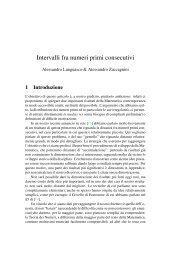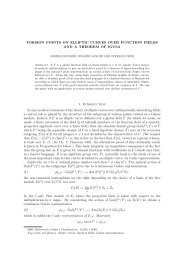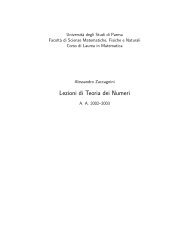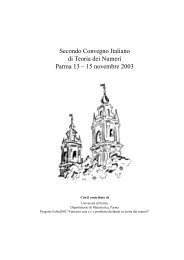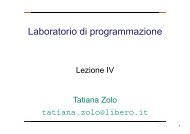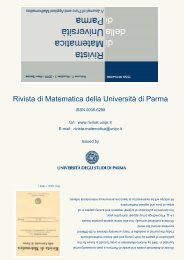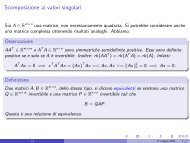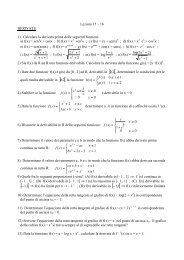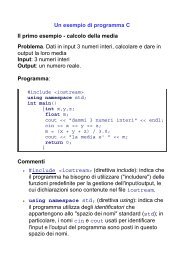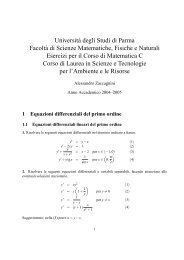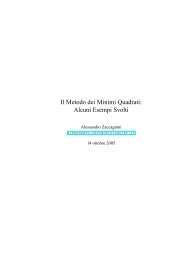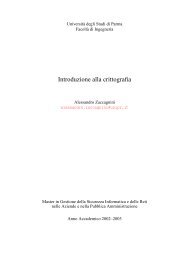ASPECTS OF IWASAWA THEORY OVER FUNCTION FIELDS 1 ...
ASPECTS OF IWASAWA THEORY OVER FUNCTION FIELDS 1 ...
ASPECTS OF IWASAWA THEORY OVER FUNCTION FIELDS 1 ...
Create successful ePaper yourself
Turn your PDF publications into a flip-book with our unique Google optimized e-Paper software.
<strong>IWASAWA</strong> <strong>THEORY</strong> <strong>OVER</strong> <strong>FUNCTION</strong> <strong>FIELDS</strong> 16be the exact sequence coming from the structure theorem for Λ d -modules (see section 3) whereE(F d ) := ⊕ iΛ d /(f i,d )is an elementary module and N(F d ), R(F d ) are pseudo-null. Let Ch Λd (A(F d )) = (Π i f i,d ) bethe characteristic ideal of A(F d ): we want to compare Ch Λd−1 (A(F d−1 )) with π F dF d−1(Ch Λd (A(F d )))for some F d−1 ⊂ F d and show that these characteristic ideals form an inverse system (in Λ).Consider the module B(F d ) := N(F d ) ⊕ R(F d ). We need the following hypothesis.Assumption 5.3. There is a choice of the pseudo-isomorphism ι in (5.7) and a splitting ofthe projection Γ d ↠ Γ d−1 so thati) Γ d = 〈γ d 〉 ⊕ Γ d−1 ;ii) B(F d ) is a finitely generated torsion Z p [[Γ d−1 ]]-module.As explained in [20] (see the remarks just before Lemma 3), for any F d and ι one can finda subfield F d−1 so that Assumption 5.3 holds.In order to ease notations, we put γ = γ d , so that Γ d d−1 = 〈γ〉.Lemma 5.4. With the above notations, one hasCh Λd−1 (A(F d )/I d d−1 A(F d)) = π d d−1(ChΛd (A(F d )) ) · Ch Λd−1 (A(F d ) Γd d−1 ) .Proof. We split the previous sequence in two byN(F d ) ↩→ A(F d ) ↠ C(F d ) , C(F d ) ↩→ E(F d ) ↠ R(F d )and consider the snake lemma sequences coming from the following diagrams(5.8) N(F d ) A(F d ) C(F d ) C(F d ) E(F d ) R(F d )γ−1N(F d ) γ−1γ−1γ−1A(F d ) C(F d ) C(F d ) i.e.,(5.9) N(F d ) Γd d−1 A(F d ) Γd d−1γ−1γ−1 E(F d ) R(F d ) , C(F d ) Γd d−1C(F d )/Id−1 d C(F d) A(F d )/Id−1 d A(F d) N(F d )/Id−1 d N(F d)and(5.10) C(F d ) Γd d−1 E(F d ) Γd d−1 R(F d ) Γd d−1R(F d )/Id−1 d R(F d) E(F d )/Id−1 d E(F d) C(F d )/Id−1 d C(F d) .From (5.7) we get an exact sequenceA(F d )/I d d−1 A(F d) −→ ⊕ iΛ d /(γ − 1, f i,d ) −→ R(F d )/I d d−1 R(F d)where the last term is a torsion(Λ d−1 -module. So is A(F d−1 ) for d ≥ 3 and, by (5.6),Ch Λd−1 (A(F d−1 )) = Ch Λd−1 A(Fd )/Id−1 d A(F d) ) . It follows that none of the f i,d ’s belongto Id−1 d . Therefore:



